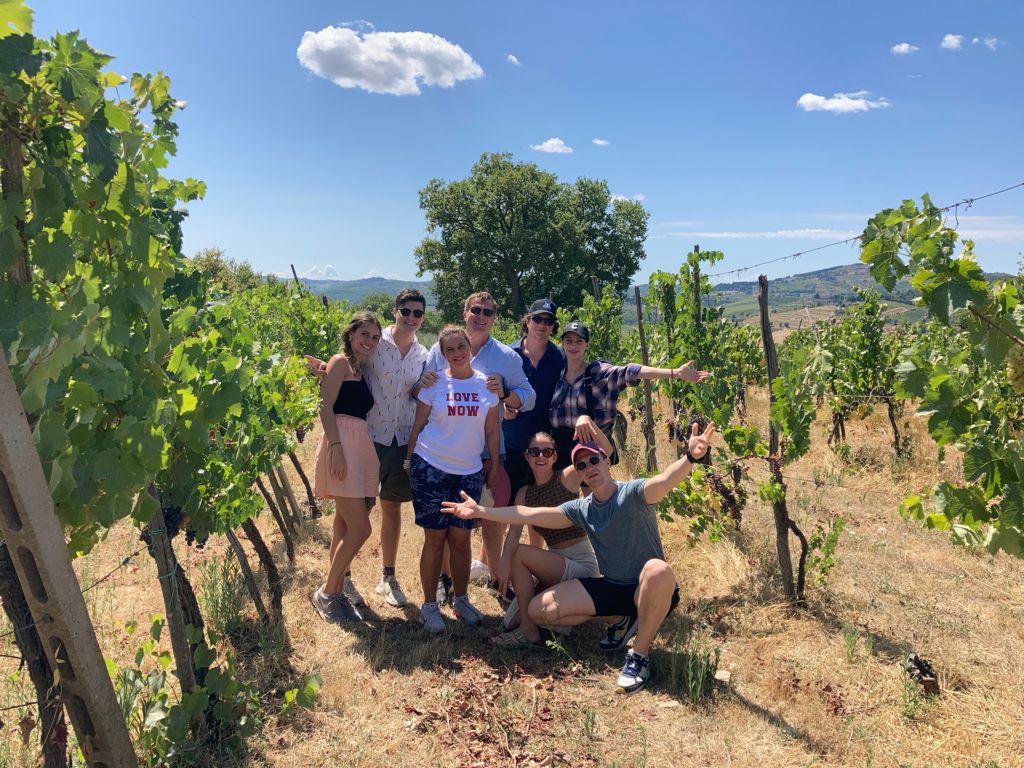Wine tours in Tuscany - About Angie - +39 3333185705 - angie.chianti@gmail.com
The story of how the black rooster –Gallo Nero– became the Chianti Military League’s symbol is the stuff of Medieval legends involving knights and longstanding rivalries, the traces of which adorn the ceiling of Florence’s emblematic Palazzo Vecchio. How today’s legendary Chianti Classico DOCG wine acquired this same black rooster as its trademark is also, appropriately enough, connected to a territorial battle. It harks back to 1924, when the Chianti Consortium was founded to protect the name of the popular wine from Chianti-style imitations grown outside the traditional production area. Essentially, the Consortium lobbied to restore Chianti’s original borders to the territory between Florence and Siena that had originally been decreed by Cosimo III, Grand Duke of Tuscany, in 1716.
Consorzio Chianti Classico nowadays
So, at over 300 years old, today’s production of Chianti Classico DOCG still contains minimum 80% Sangiovese along with maximum 20% native grapes –Canaiolo, Colorino– or international varieties –Merlot, Cabernet Sauvignon. The denomination is limited exclusively to roughly 180, 000 acres at the very heart of Tuscany covering 4 entire municipalities – Castellina in Chianti, Gaiole in Chianti, Greve in Chianti and Radda in Chianti; and parts of five other municipal territories – Barberino Val d’Elsa, Castelnuovo Berardenga, Poggibonsi, San Casciano Val di Pesa and Tavarnelle Val di Pesa.
To this day, the Consorzio Chianti Classico, the association counting over 180 wine estates and nearly 700 DOCg wines – some 96% of production– continues to protect and promote the territory’s iconic wines and culture. Two ways they have revamped Chianti Classico’s image and helped boost sales are through showcases like the trendy Enoteca in the Mercato Centrale, just steps from Florence’s Duomo, or Cathedral, and the Casa Chianti Classico, in the converted Franciscan Monastery of Santa Maria del Prato at Radda in Chianti near Siena, with its charming restaurant, museum, conference facilities and wine shop.
Chianti Classico embraces a huge variety of estates and exceptional quality wines with major players like Antinori, Barone Ricasoli, Banfi, Cecchi, Rocca delle Macìe, Ruffino to name a few, meaning the sky really is the limit here. But let’s look now at three perhaps less well-known wines with a few common features. All three of these Chianti Classico DOCG reds hail from small boutique wineries, and received top ratings for their 2013 Riserva or Gran Selezione.
Castello di Ama
Internationally-acclaimed, secluded family-run estate outside Radda in Chianti (Siena) with a duplicate vocation for fine wines and contemporary art. Since 1999 they‘ve invited artists such as Louise Bourgeois, Anish Kapoor, Daniel Buren and Michelangelo Pistoletto, to create site-specific installations.
Castello di Ama Chianti Classico Gran Selezione 2013 – San Lorenzo
Denomination: DOCG
Grape varieties: Sangiovese, hint of Merlot and Malvasia Nera
Tasting notes: Dark intense red with crimson overtones. Rich fruity nose of berries with cinnamon notes, traces of leather and cigar-box. Pleasant initial acidity, delicate rounded tannins and long, elegant finish.
Enjoy with roasted red meats, rabbit or game, suitable with cured meats and aged cheese too.
Casa Brancaia
A love story between a Swiss couple, Brigitte and Bruno Widmer, and then- abandoned Brancaia estate near Castellina in Chianti that began in 1981; their wines have since received highest international acclaim.
Brancaia Chianti Classico Riserva 2013
Denomination: DOCG
Grape varieties: Sangiovese 80%, Merlot 20%
Tasting notes: Deep, dense ruby red. Complex mix of tropical and black fruits, accents of tea, tobacco and dark chocolate. Restrained and balanced on the palate with exquisite, velvet tannins and hint of almond.
A great match for grilled sirloin steak, stews or venison. Will age gracefully at least a decade.
Nittardi Estate
Another love story, this one between Frankfurt publisher/art gallerist Peter Femfert, Venetian-born historian Stefania Casali and the Nittardi estate on Florence-Siena provincial boundary. It was once owned by Renaissance artist Michelangelo Buonarroti, to whom the fine art wine labels and sculpture garden are a worthy tribute.
Nittardi Chianti Classico Riserva 2013
Denomination: DOCG
Grape varieties: Sangiovese 95%, Merlot 5%
Tasting notes: Deep, impenetrable ruby red. Fruity nose of cherries, berries with vanilla-chocolate topping. Elegant acidity, fine silky tannins and warm persistent finish.
Perfect with traditional and creative Tuscan cuisine or as a companion to meditation.
Curious about the award-winning wines and fantastic artworks at Casa Chianti Classico, Castello di Ama, Casa Brancaia or Nittardi Estate? We can help you discover these or any of the Chianti Classico estates!
Book now your special and exciting Chianti and Super Tuscan wine tour






